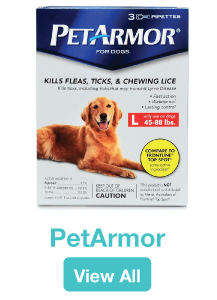
What Are Canine Scabies and What You Can Do
Sarcoptic mange, also known as canine scabies, is a highly contagious zoonotic disease that can severely irritate your dog. Sarcoptic mange and demodectic mange both commonly infect dogs and are most often caused by an itch mite, which can burrow under the skin and infest your pet for three to four weeks. These mites are oval in shape, have eight legs and are light in color.
Chances are, you wonít see these microscopic mites even during an infestation, as they can only survive off the host's body for two to four days. Each species of sarcoptic mite will only spread from dog to dog or from cat to cat- but those traveling do so easily. You can protect your dog from these mites with a variety of preventive treatments, including those with imidacloprid and fipronil, like Frontline Plus - or those with ivermectin, like Heartgard and Heartgard Plus
Symptoms
Symptoms are not exposed immediately following an infection; it will take more than a full week after a mite burrows into your petís skin before most of the symptoms begin to show. You may notice your pet feeling uncomfortable as soon as the infestation occurs. This may take the form of excessive biting and licking of certain parts of his body. Sarcoptic mange is very itchy and irritating and is in fact the itchiest of all manges.
After a week, scabs and abrasions can also form on the skin. Mites may also cause a thickening or darkening of the skin and a loss of hair. Small blisters, rashes, and crusty lesions may serve as some of the most definitive signs of sarcoptic mange.

Causes
Your pup might have had direct contact with an infected animal or object. The mites are most active in warm places and often burrow around the muzzle, eyes, and ears. You might notice bald patches appearing on his legs and face. During treatment, your vet might require isolation from other pets or children since it's very contagious. When transferred to humans, the mange causes rashes that look similar to mosquito bites.
Treatments
Depending on the seriousness of your dog's mange, your vet might prescribe one of several types of medications as treatment. The diagnosis usually entails the use of a microscope to see if there are mites hiding in his or her hair follicles. Scabies can be difficult to diagnose with the naked eye, since its symptoms look similar to other skin diseases and parasitic infestations.
Ivermectin, Milbemycin, and selamectin are some of anti-parasitic medications your vet might prescribe. Ivermectin is usually given as a weekly injection in one to four doses. In the United States, its label does not specify its use against sarcoptic mange. If you have a Collie or Australian Shepherd, selamectin is the best product for controlling mites and ticks. Your vet might also endorse topical treatments to relieve the itch on your pet's skin.
For pet owners who can't send their dog to a vet, there are natural ways to relieve the symptoms of mange at home. The usual natural remedies are honey, yogurt, and garlic. Honey is applied directly on the skin. Yogurt, on the other hand, is used to deal with crusting on the ears. Garlic can be added to the animal's food- but never go overboard on garlic as too much of it can irritate your dog's stomach.

Other Considerations
With an ailing immune system, nutrition plays a very important role. You can start by giving your pup grain-free food. Canine scabies can be cleared off in four to six weeks given a careful treatment, so your pooch should be fine so long as you carefully follow the instructions of your veterinarian.



